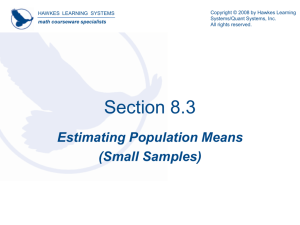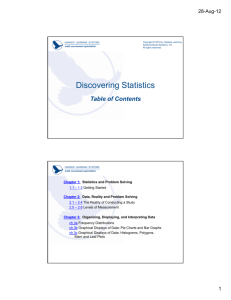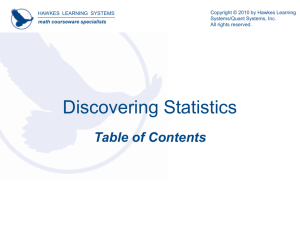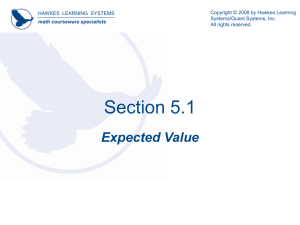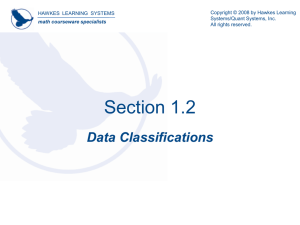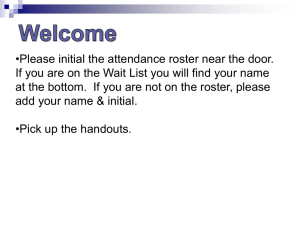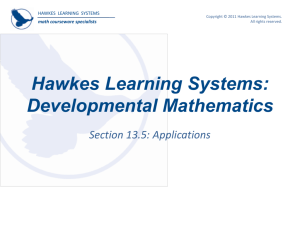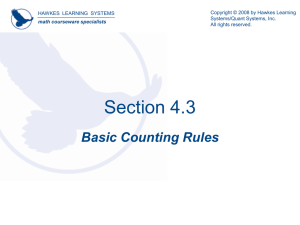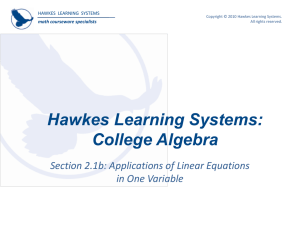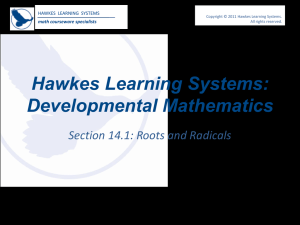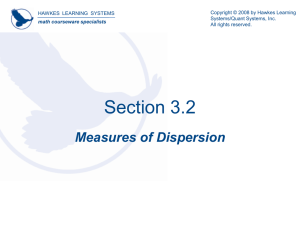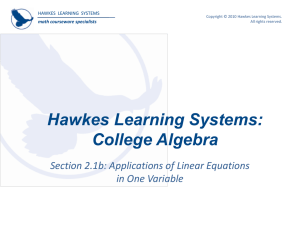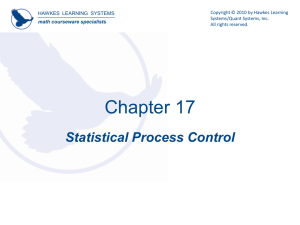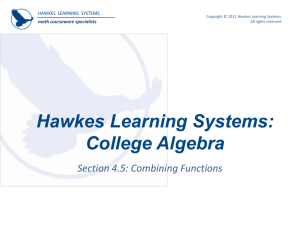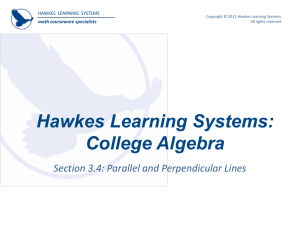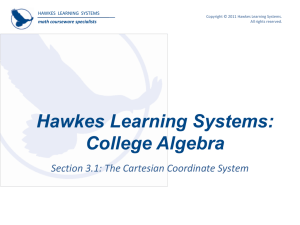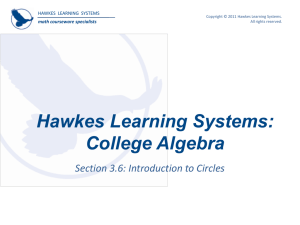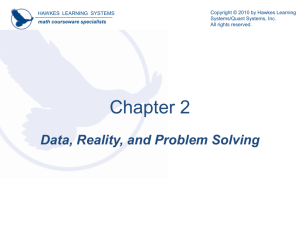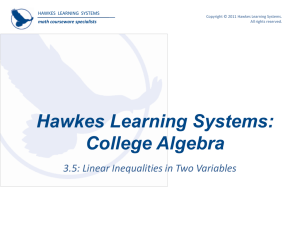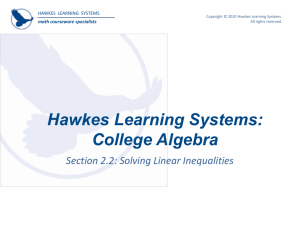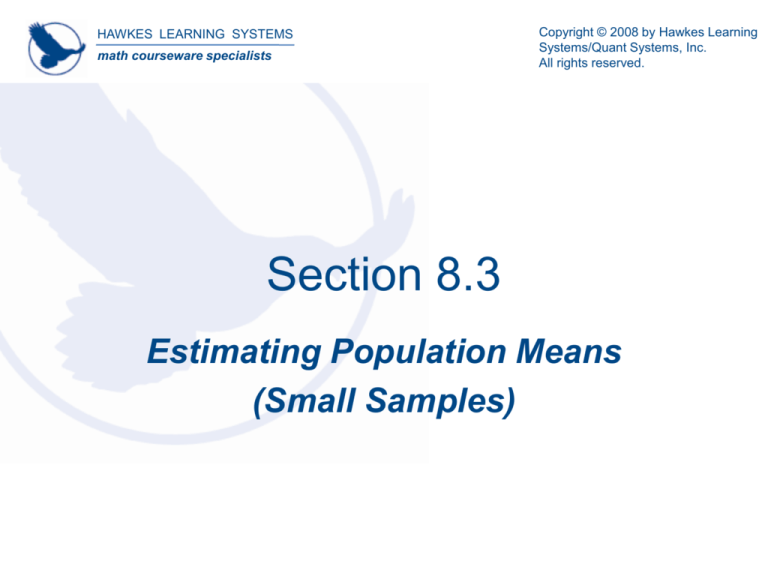
HAWKES LEARNING SYSTEMS
math courseware specialists
Copyright © 2008 by Hawkes Learning
Systems/Quant Systems, Inc.
All rights reserved.
Section 8.3
Estimating Population Means
(Small Samples)
HAWKES LEARNING SYSTEMS
Confidence Intervals
math courseware specialists
8.3 Estimating Population Means
(Small Samples)
Criteria for estimating the population mean for small samples:
• All possible samples of a given size have an equal
probability of being chosen.
• The size of the sample is less than 30 (n < 30).
• The distribution of the population is approximately
normal.
• The population’s standard deviation is unknown.
When all of the above conditions are met, then the
distribution used to calculate the margin of error for the
population mean is the Student t-distribution.
HAWKES LEARNING SYSTEMS
Confidence Intervals
math courseware specialists
8.3 Estimating Population Means
(Small Samples)
Margin of Error, E, for Small Samples:
ta/2 = the critical t-value
a=1–c
s = the sample standard deviation
n = the sample size
When calculating the margin of error, round to one more decimal place
than the original data, or the same number of places as the standard
deviation.
HAWKES LEARNING SYSTEMS
Confidence Intervals
math courseware specialists
8.3 Estimating Population Means
(Small Samples)
Find the margin of error:
Assuming the population is approximately normal and all
samples have an equal probability of being chosen, find the
margin of error for a sample size of 10 given that s = 15.5
and the level of confidence is 95%.
Solution:
n = 10, s = 15.5, c = 0.95, a = 1 – 0.95 = 0.05
t0.05/2 = t0.025 = 2.262
HAWKES LEARNING SYSTEMS
Confidence Intervals
math courseware specialists
8.3 Estimating Population Means
(Small Samples)
Construct a confidence interval:
A student records the repair cost for 20 randomly selected
computers. A sample mean of $216.53 and a standard deviation
of $15.86 are subsequently computed. Determine the 98%
confidence interval for the mean repair cost for all computers.
Assume the criteria for this section are met.
Solution:
n = 20,
= 216.53, s = 15.86, c = 0.98, a = 1 – 0.98 = 0.02
t0.02/2 = t0.01 = 2.539
216.53 – 9.00 < < 216.53+ 9.00
$207.53 < < $225.53
($207.53, $225.53)

